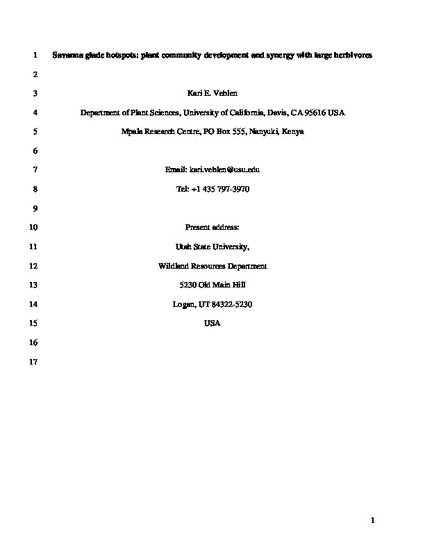
Article
Savanna glade hotspots : Plant community development and synergy with large herbivores
Journal of Arid Environments
(2012)
Abstract
In African savannas, abandonment of traditional livestock corrals (bomas) creates long-term mosaics of nutrient hotspots embedded in a lower-nutrient matrix. It is unclear how plant communities develop over time on these sites in clay-rich “black cotton” soils or how herbivores attracted to these sites affect vegetation development. I first examined whether treeless “glades”, derived from abandoned bomas, function as nutrient and herbivore hotspots. Soil, vegetation, and herbivore data were collected on glades of varying ages. The results indicated that glades persist as long-term (≥four decades) patches (0.25–1.0 ha) of improved soil texture and increased nutrient levels, palatable grasses, and herbivore use. Glade vegetation also appears to undergo succession from Cynodon plectostachyus to Pennisetum stramineum dominance. Based on these patterns, exclusion cages were used to test herbivore effects on glade vegetation development. I found that large herbivores may retard succession by suppressing invasion of P. stramineum into C. plectostachyus-dominated areas. These results provide evidence that abundant anthropogenic glades function as long-term nutrient and wildlife hotspots in black cotton soils, distinct from similar hotspots in other soil types. The findings provide evidence that large herbivores can exert control over development and persistence of glades through their effects on plant community dynamics.
Disciplines
Publication Date
2012
DOI
https://doi.org/10.1016/j.jaridenv.2011.10.016
Citation Information
Kari E. Veblen. "Savanna glade hotspots : Plant community development and synergy with large herbivores" Journal of Arid Environments Vol. 78 (2012) p. 119 - 127 Available at: http://works.bepress.com/kari_veblen/83/
